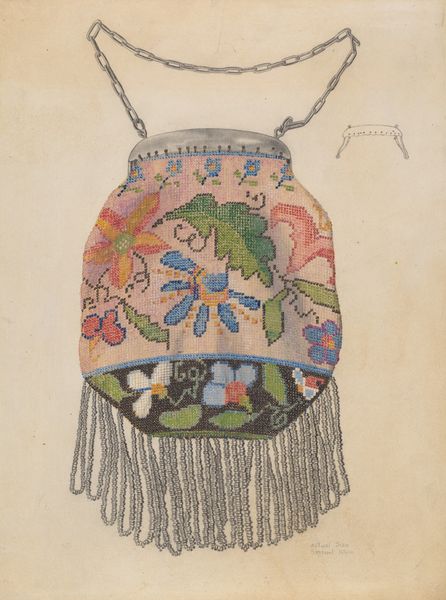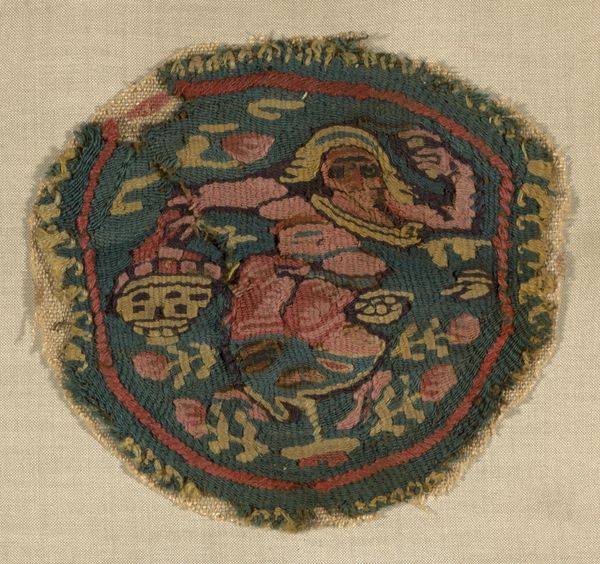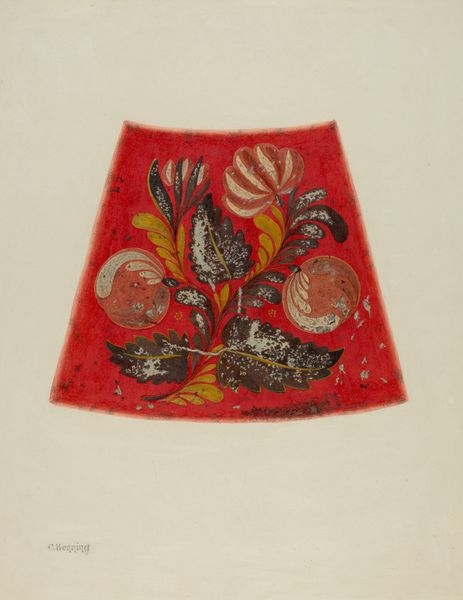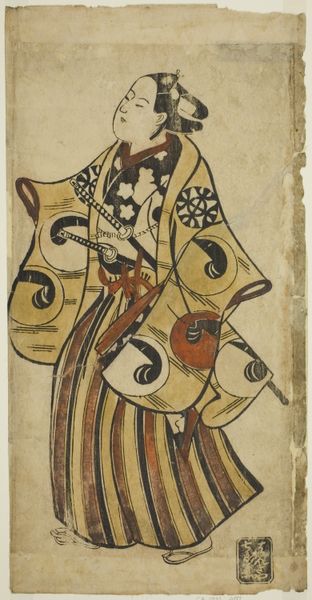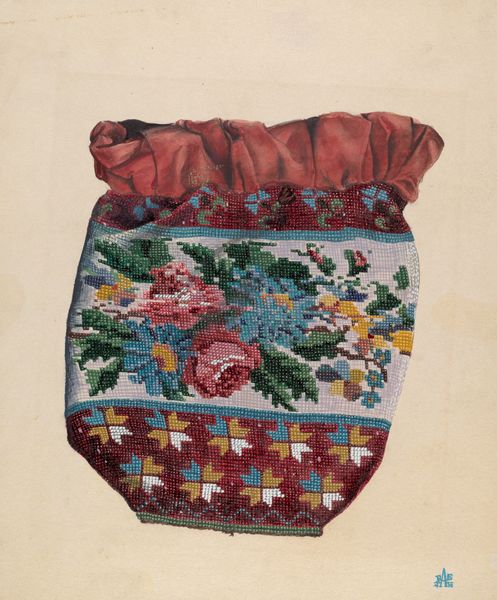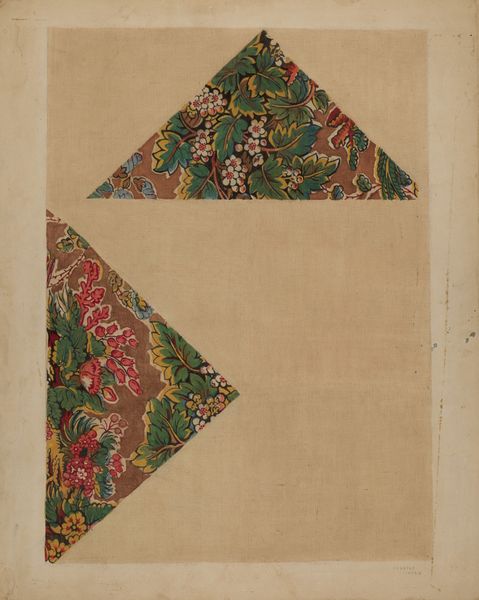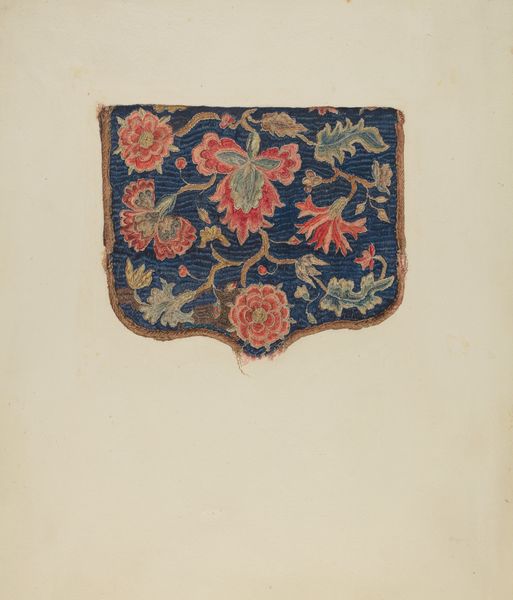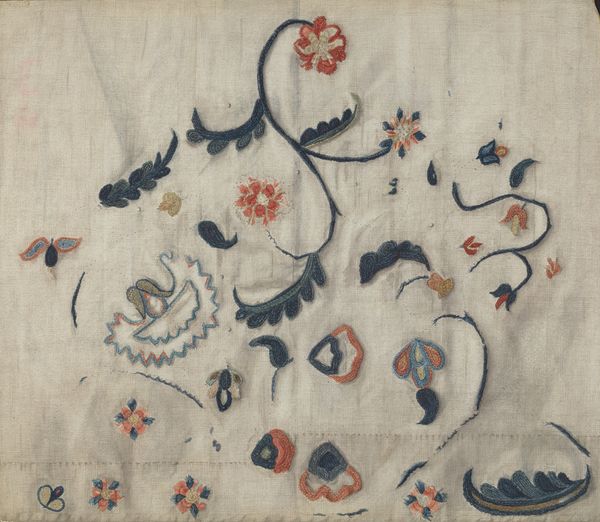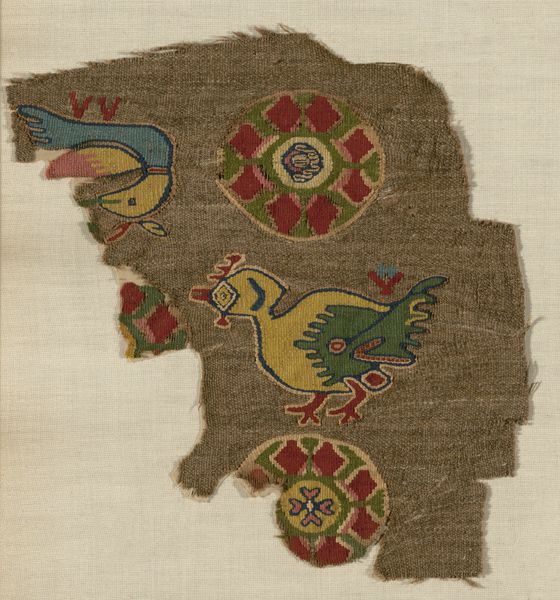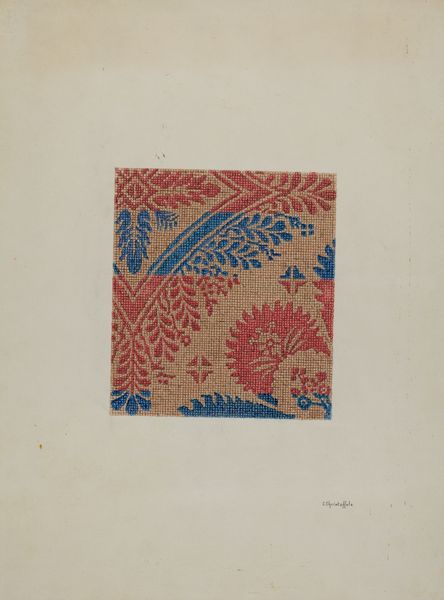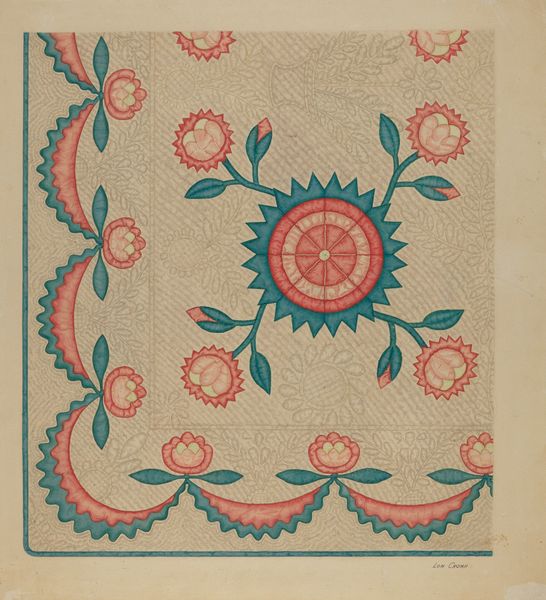
Fragment Roman period (30 B.C.– 641 A.D.)/Arab period (641–969), 7th century
0:00
0:00
weaving, textile
#
medieval
#
weaving
#
textile
#
figuration
#
text
#
islamic-art
Dimensions: 14 × 13.3 cm (5 1/2 × 5 1/4 in.)
Copyright: Public Domain
This textile fragment, crafted by Coptic hands, presents a rich tapestry of symbols woven with profound cultural resonance. At its heart, we see an animal and a cross within a vesica piscis shape. Consider how the vesica piscis, formed by the intersection of two circles, has appeared across cultures. In some traditions, it represents the yoni, the sacred feminine space of generation and birth. Then we see how this shape has evolved into a symbol for early Christianity, adopted as a symbol for Christ. It’s an example of the pagan world's symbols evolving and being given new life in the Christian era. The image serves as a potent reminder of our collective unconscious, where symbols transcend time, reappearing, evolving, and engaging viewers on a subconscious level.
Comments
No comments
Be the first to comment and join the conversation on the ultimate creative platform.
